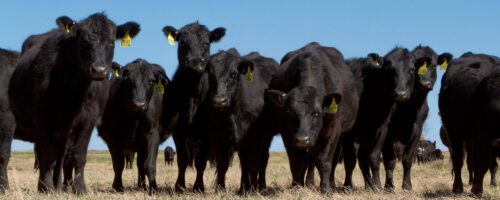The balance sheet is a document that lists the value of all assets owned and all liabilities owed by an entity at a particular point in time. It is also referred to as a financial statement, a statement of equity and a net worth statement.
Preparing a balance sheet is a standard operating procedure for many businesses, including farms and ranches. It can also be useful for an individual or family who gets in the habit of preparing it on a regular basis. It is the best way to determine if an entity is financially progressing over time. Other financial documents can reveal how much revenue was received and how much was paid out for expenses, which is relevant and beneficial to know, but those documents will not reveal how much of any excess revenue was retained and added to an asset whether it be a bank account or physical asset.
When To Prepare
The interval an entity chooses to prepare a current balance sheet will depend on amount of variation in revenue and expense flow, the volatility of asset values, and the size of the entity. Intervals can be as short as one month and as long as one year or quarterly or semi-annually.
Many farmers and ranchers choose to complete a balance sheet annually. There is no right or wrong time of the year to prepare one. Often, the balance sheet is prepared after farm production has been sold or when the inventory is the lowest, allowing for less uncertainty regarding the value of calves, grain or hay. However, it is important that the financial statement be prepared close to the same date each year.
This provides for the best opportunity to compare change over time, which is one of the greatest values the document can provide. Just as a series of school photographs of a child starting in kindergarten and progressing through 12th grade can reveal the child’s physical change over that time, so can the series of balance sheets prepared near the same time each year reveal the farm or ranch business’s financial change over time.
If a farmer or rancher depends on their tax return rather than a balance sheet to inform them of how the business progressed financially during the reporting period, it is very likely that during certain difficult years the true facts may be delayed too long for the owner to make prudent management decisions to survive the difficult times.
How To Prepare
There are two ways to prepare a balance sheet: a market basis approach and a cost basis. There are pros and cons to each approach. If a farming business employs the services of a certified public accountant (CPA), they will often use the cost basis, which includes all assets being valued at their cost with a deduction for accumulated depreciation. An accrued tax obligation is also usually included in the liabilities section before calculating equity or net worth. Net worth is calculated as the difference between total assets and total liabilities.
Many sole proprietor operations prepare balance sheets based on market values. Asset values are listed based on an estimate of their market value. This is generally not a problem for financial assets such as checking, savings or investment accounts. However, it can create a challenge for assets where market values are difficult to assess. Oftentimes, an estimate of income tax owed is omitted, which would be a liability since tax basis in many assets is less than their market value.
Net Worth
At the completion of a balance sheet, what many are interested in is the net worth. How has it changed since the last prepared balance sheet? There are two primary ways that net worth can change. One is through retained earnings or profit that stays in the business. The other is by changing the value of the assets, commonly referred to as valuation equity. Many times there is justification for changing an asset value. The pitfall to be careful of is when net worth increases less than the asset revaluation.
In conclusion, additional information can be obtained from a balance sheet through the calculation of various financial ratios. Just as a medical doctor focuses on certain metrics revealed in a wellness exam to determine one’s physical health, an owner can determine the financial health of the farm business based on financial ratios calculated from an accurate balance sheet.
One of the more popular financial ratios is the debt-to-asset ratio. This ratio reveals the amount of all assets. When this ratio exceeds .50 or 50 percent, it becomes a concern. Just as a doctor can divert a potentially serious illness by noting the red flags from a wellness exam such is the case by noting financial ratios calculated from a balance sheet. Without a wellness exam, the red flags are not revealed; without a balance sheet, no red flags can be noted for the farm business.
For more in-depth information, please call a Noble Research Institute agricultural economics consultant or visit the Farm Financial Standards Council or the Center for Farm Financial Management at cffm.umn.edu/farm-management-publications.



Comment